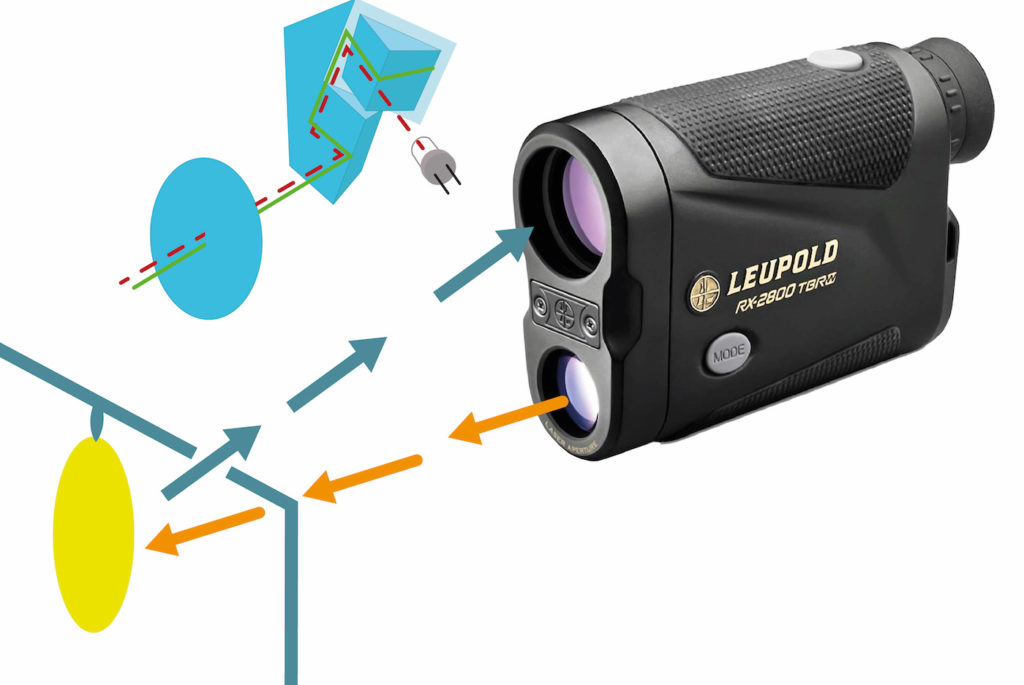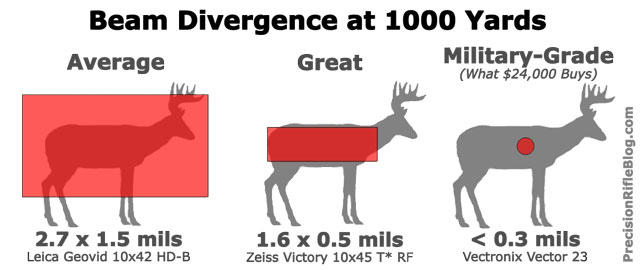How It Works

- A laser
rangefinder works by emitting laser beams to
measure the distance between an object and the
receiver. The speed of light is a known
number, and the rangefinder uses this along
with the time it takes for the laser beam to
reach the object and bounce back to calculate
the distance.
- Laser
rangefinders use a highly accurate built in
clock to measure the time taken from when the
laser is emitted to when it returns back to
the receiver aperture.
- The laser beams
are also emitted in pulses to prevent the
chance of jamming and to help generate more
accurate data. Also, with the use of Doppler
Effect, technologies can identify if
the object is moving away or towards the
receiver in the case that the object is not
still.
- "The Doppler effect or Doppler
shift (or simply Doppler, when in
context) is the change in frequency of a
wave in relation to an observer who is
moving relative to the wave source. It
is named after the Austrian physicist
Christian Doppler, who described the
phenomenon in 1842."

https://opticsmag.com/wp-content/uploads/2020/07/How-a-rangefinder-works-1024x685.jpg
- The precision of a range
finder depends on the rise and fall time of
the laser pulse. A laser rangefinder that
uses very sharp laser pulses and has a very
fast detector, usually military grade
rangefinders, can be accurate to a few
millimeters.
- Rangefinders emit very
narrow beams, however over long distances
they eventually begin to spread due to the
divergence of laser beams. The quality of
the rangefinder is defined on how far the
beam can travel before begging to spread.
Many factors contribute to the spread of the
beam as the distance is increased. One
factor is the presence of air bubbles in the
air that act as lenses causing the beam to
wander. Another factor is leaves and
branches that are in the way of the object
that is intended for ranging, as the beam
becomes more spread out parts of the beam
can be reflected off leaves and branches
causing and early return and an inaccurate
ranging. Below is a figure that shows what
happens to the beam over distances:

 http://precisionrifleblog.com/wp-content/uploads/2013/10/rangefinder-beam-divergence-at-1000-yards.jpg?w=640
http://precisionrifleblog.com/wp-content/uploads/2013/10/rangefinder-beam-divergence-at-1000-yards.jpg?w=640
http://precisionrifleblog.com/wp-content/uploads/2013/10/rangefinder-beam-divergence-diagram1.jpg
|

